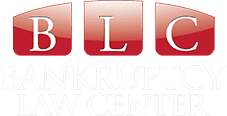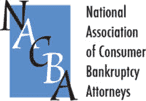There are six different types of bankruptcy under the United States Bankruptcy Code. The name of each type of bankruptcy is the chapter of the Bankruptcy Code, in which it is described. For example, chapter 7 liquidation bankruptcy is named after chapter 7 of the bankruptcy code, where this type of bankruptcy is discussed. Although there are six different types of bankruptcy, most individuals and businesses file for chapter 7, chapter 11, or chapter 13 bankruptcy. This post will discuss the differences between the six different types of bankruptcy.
Chapter 7 Bankruptcy
Chapter 7 bankruptcies are the most common types of bankruptcies. These types of bankruptcies are known as liquidation bankruptcy because at the end of the process, the filer’s assets will be liquidated. The bankruptcy trustee overseeing the case uses the profits from the sale to pay creditors. For many people, a chapter 7 bankruptcy is the most convenient solution when the debtor knows they cannot repay the outstanding debts.
The process is relatively similar when a business or an individual files for chapter 7 bankruptcy. The bankruptcy trustee will collect the debt or non-exempt assets, liquidate them, and divide the money among creditors. The debt will be discharged at the end of a chapter 7 bankruptcy. The filer will not be liable for the remaining dischargeable debts.
Chapter 11 Bankruptcy
When the debtor can still get their business back on track financially, chapter 11 bankruptcy can be an appealing option. The goal of a chapter 11 bankruptcy is to help a business recover through reorganizing. The business can continue operating throughout the bankruptcy process. During the process, the business will describe its plan to repay its creditors. In some cases, companies will need to wait for a year or more before the bankruptcy court approves the repayment plan.
Once the court has validated the plan, the debtor will begin reorganizing the business, keeping essential assets while paying creditors out of the profit they generate. Large companies typically opt to file for chapter 11 bankruptcy. Many smaller businesses have difficulty filing for a chapter 11 bankruptcy due to the high cost of obtaining plan approval.
Chapter 13 Bankruptcy
Chapter 13 is another commonly used type of bankruptcy. People who earn a regular income can reorganize their debt and pay it off over three to five years. As with a chapter 11 bankruptcy, the debtor in a chapter 13 bankruptcy must submit a repayment plan to the bankruptcy court. The amount of money the debtor must pay back depends on their revenue, debt, and the type of property they possess. Once the repayment plan has been approved, the trustee will begin paying creditors. Some of the benefits of filing a Chapter 13 bankruptcy include the following:
- The possibility of rescheduling and extending secured debts
- The debtor’s ability to protect their home from foreclosure
- The protection granted to third parties, such as co-signers, who are responsible for Consumer debts
- The lack of direct contact between debtor and creditors (debtors send payments to the trustee, who pays the creditors)
Many people pursue a chapter 13 bankruptcy because they have debts that cannot be discharged through a chapter 7 bankruptcy. For those with tax debt, child support debt, and liens that exceed the value of their assets, a chapter 13 bankruptcy may be the best option.
Chapter 12 Bankruptcy
Chapter 12 bankruptcy is a unique type of bankruptcy available to a restricted domain of activity, specifically fishing or farming companies. This type of bankruptcy allows family businesses that operate fishing or farming companies to restructure their business and avoid liquidation. Most companies will be able to keep operating after they file for bankruptcy. Companies filing for chapter 12 bankruptcy have 90 days to come forward with their own payment plan. Sometimes the bankruptcy court will extend the deadline. The debtor will get three to five years to pay off their debt.
Chapter 9 Bankruptcy
Chapter 9 bankruptcy is available for public municipalities, such as cities, towns, counties, taxing districts, villages, municipal utilities, and school districts. When municipalities are faced with financial difficulties, this type of bankruptcy will protect them from creditors. The municipality will need to develop and implement a plan to repay its debts. There are three commonly used methods to reorganize debt in a chapter 9 bankruptcy:
- Getting longer debt maturities
- Getting an interest reduction
- Accessing a new loan to refinance the debt
Chapter 9 bankruptcy does not involve liquidating assets and using the proceeds to pay off creditors. Only municipalities authorized to be a debtor, insolvent, and ready to implement an adjustment plan can file for chapter 9 bankruptcy.
Chapter 15 Bankruptcy
Chapter 15 bankruptcy is the newest form of bankruptcy that has been available since 2005. This type of bankruptcy allows foreign debtors to file for bankruptcy using US federal bankruptcy laws. Congress added chapter 15 bankruptcy to the bankruptcy code to ensure coordinating cross-border insolvency. The foreign representative must file a petition to recognize a foreign proceeding. After a court hearing, the court can recognize the foreign proceeding, allowing the representative to seek relief.
Which Type of Bankruptcy is Right for Me?
You may be wondering which type of bankruptcy works for you. To understand the benefits and drawbacks of each type of bankruptcy and how they affect your personal or business estate, we recommend discussing your case with an attorney.
Multiple factors will play a part in your decision about which type of bankruptcy to file. For example, your income, the types of debt you have, your ultimate financial goals, and other factors will influence the decision. An attorney will be able to explain the pros and cons of each type of bankruptcy and help you make an informed, and educated decision about your case.








